The Patent Slipway at the yard is undergoing a major restoration for the first time in nearly 30 years. Underfall Yard Volunteer Writer Andrew Radford decided to investigate.
Underfall Yard at the Western end of Bristol’s floating harbour is a treasure trove of historic machinery and equipment related to the nautical world, much of which is still in working order, making the Yard not a Museum but an exemplar of conservation and regeneration. A prime example of this and one of the stars of the Yard is undoubtedly the Patent Slip.
Boatyards commonly have slipways in order that boats can be cleaned or repaired out of the water, but although the UK once boasted over 200 ‘heave out’ slipways of the Thomas Morton patented design (1819), most have now disappeared, making that at Underfall Yard in Bristol one of only a few remaining in regular commercial use.
There has been a slipway at Underfall since the 1850s and the current design was installed by Docks Engineer John Ward Girdlestone in the late 1880’s. Almost one hundred years later, in the 1970s, the slip was out of use and fell into disrepair until, in the 1990s, the Underfall Trust commissioned a total rebuild which was undertaken by members of the Slipway Co-operative. Supervising the works was Win Cnoops, a Dutch boat builder, who describes his involvement as the result of a ‘happy coincidence.’
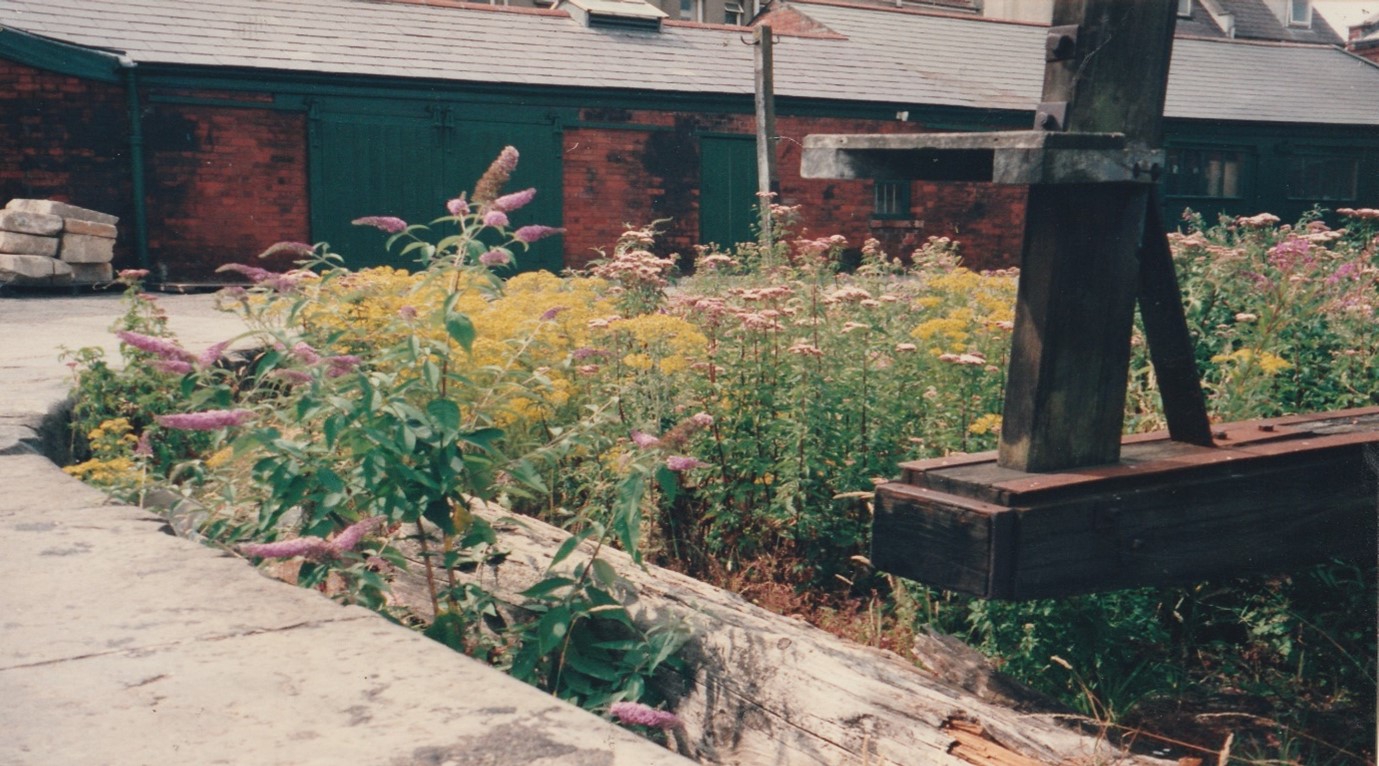
A corner of the slipway prior to restoration in the 1990s.
The Slip is not only of value for its historical importance, but also as an asset for the mariners of Bristol and beyond and a source of income for the Trust. So the maintenance of the Slip in good working order is vital. Now, in 2022, the time has come for a major restoration and, happily, Win, who now has a boat building Company, Star Yachts, based at the yard as well as having responsibility for the Slip, is in place to do the work.
It is January 12th and I visit the Yard to meet Win to discuss the project and the major issues he faces. The work has just begun & two of his team, Colin and Roger, are battling with large old bolts securing the main ‘spine’ timber which is to be replaced. There are many other wooden beams to replace as well as some of the wheels and bogies which enable the cradle to be hauled up on rails.
We look at some massive, 18ft long timbers, awaiting their place as part of the new structure. These are beams of Greenheart, reputedly the world’s hardest and densest wood, which comes from Guyana and is particularly resistant to water and water-borne pests. As we talk of the main challenges facing the team Win points out that whilst the sections of the slip which are always exposed are easy to judge for wear and damage, the condition of those which are constantly submerged is difficult to assess, so there may be unwelcome surprises. Win however, is not expecting any as he tells me that, in general, wood survives better underwater than in the air. In addition to renewing many of the wooden elements of the slip, new iron castings have had to be ordered. Pleasingly, this involved the use of the original wooden patterns made at the yard in the 1950s from which iron castings have been made. The work is expected to take about a month to complete and I intend to visit regularly to see how things are progressing.
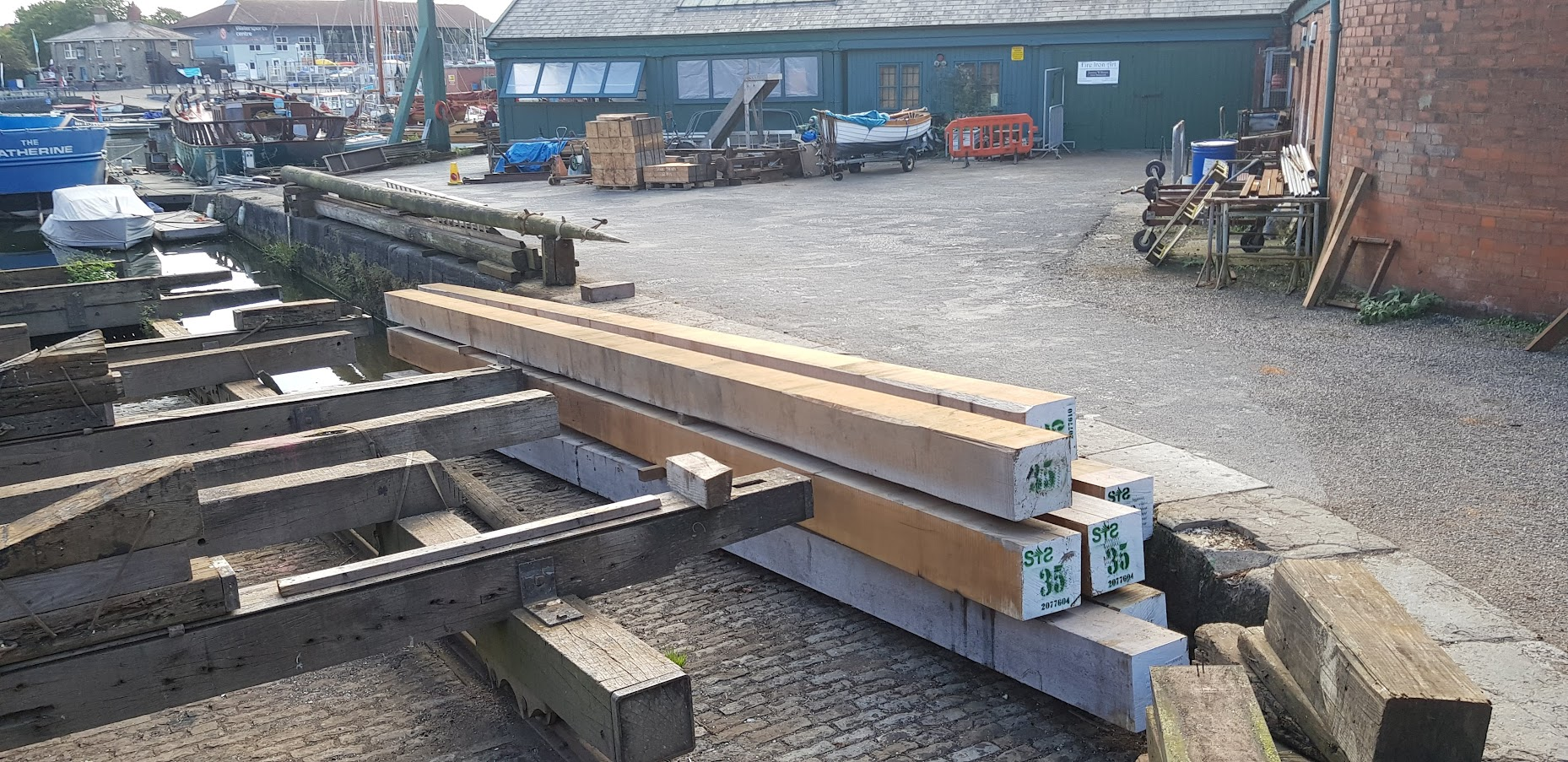
Greenheart timbers ready to be used to repair the slip.
Now, whilst the Patent Slip and its history, structure and mechanisms are fascinating, it is the work it does which I find particularly appealing and so I’m interested to see some of the many vessels which have been ‘up’ on the slip over the years. Happily, the Yard has excellent records of vessels which have been ‘slipped’ since the original restoration and a few of these are shown below. The Barry Docks Lifeboat, the Pride of Bristol, the Mayflower, the John King, the Isambard Brunel survey vessel, the and, of course, the Matthew.
These are just a few of the many vessels which have sat in the cradle of the Patent Slip at Underfall Yard to be cleaned, repaired, painted or restored. The Slip, now undergoing its own repairs and restoration, should be back in action in February 2022. For more news on the progress of the work watch this space.
To donate to Underfall Yard Trust (Registered Charity: 1041863) to support the restoration of the slipway and other activities please visit our Just Giving Page: https://www.justgiving.com/theunderfallyardtrust
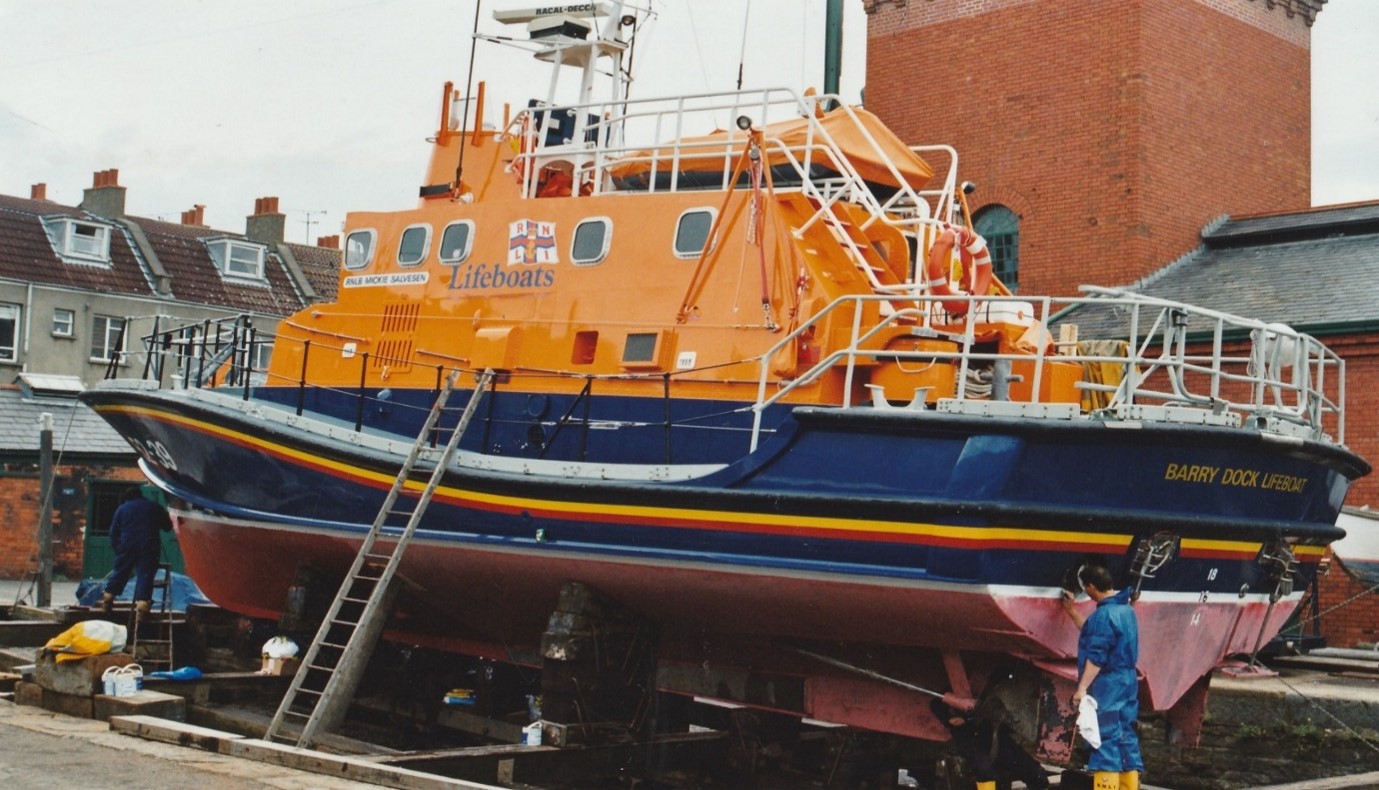
The Barry Dock Lifeboat Mickie Salvesen on the Slip. Now based in Iceland and in service at Barry Dock between 2003 & 2006, this Arun Class lifeboat was capable of 18 knots with a crew of 7. Previously in service at Kikwall, Scotland, 1988 – 1998.
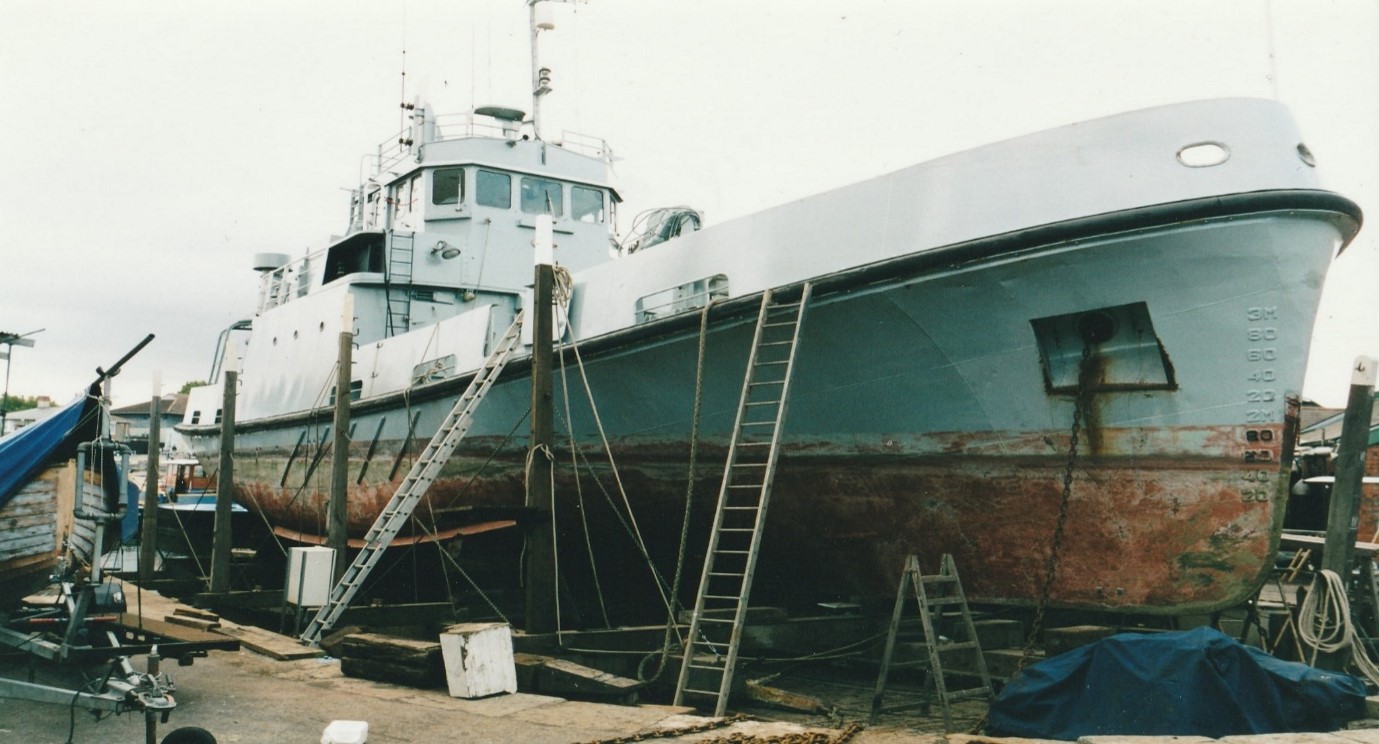
The Pride of Bristol, 2004. Built in 1982 as a Royal Navy Fleet tender of the ‘Manly Class’ and formerly known as Messina, The Pride of Bristol is now a training ship and providing educational trips for young people, youth groups and others.
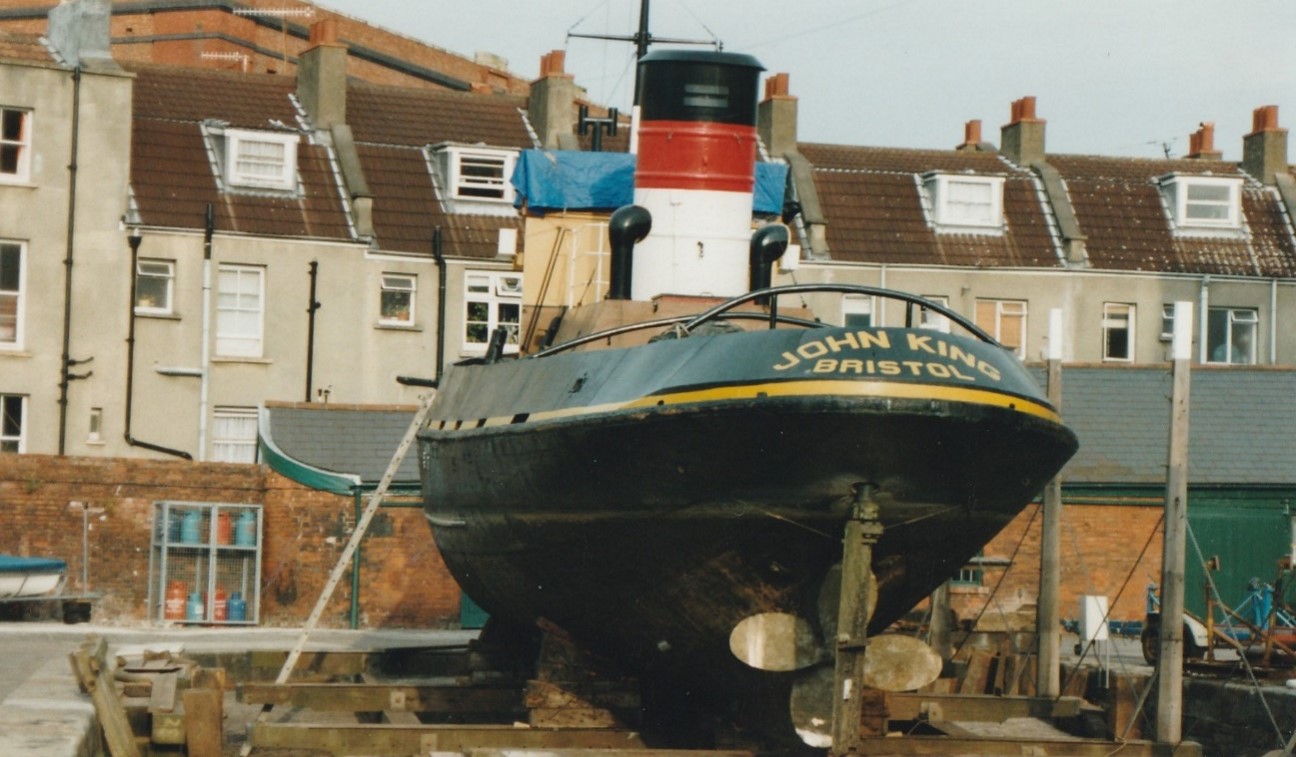
The tug boat John King on the Slip. The John King, 47 tonnes, was built in Bristol in 1935 by Charles Hill & Sons and used for towing ships on the Avon and in the docks at Bristol and Avonmouth. During the Blitz of 1940 she spent 17 days fighting the fires at Pembroke Dock oil installations and was attacked by German aircraft on her way home. Her final job in Bristol was to manoeuvre the SS Great Britain into Great Western Dock. She was sold in 1970 and then brought home when purchased by Bristol Industrial Museums in 1995.
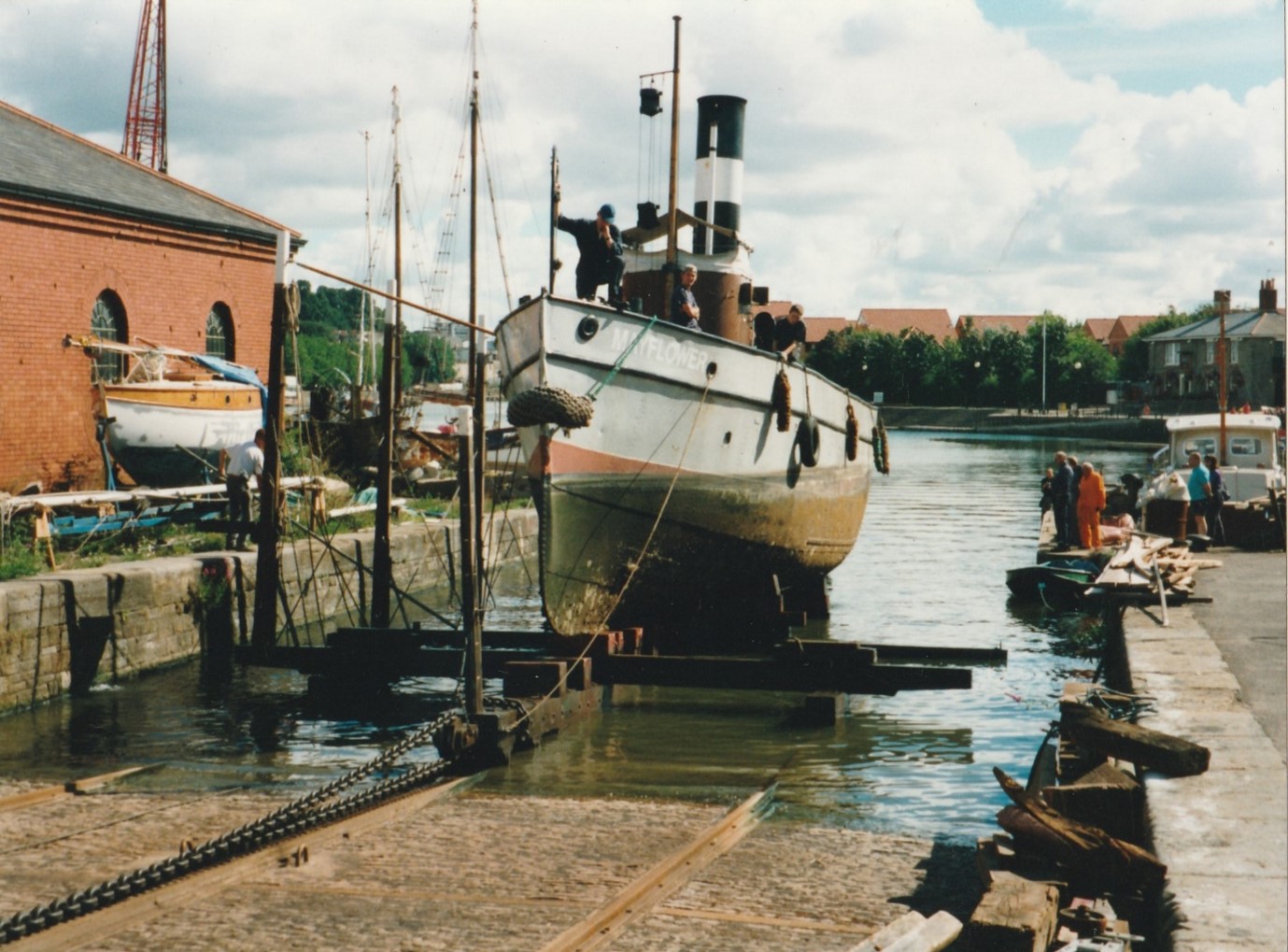
The Steam Tugboat Mayflower on the Slip in 2000.The Mayflower is an important historic boat. She was a steam tugboat built in Bristol in 1861 and in service for over 100 years until 1964. Sold for scrap in 1967, but bought by the magnificently named 20 year old, Anthony H Barrett Great Wynley. He tried for 14 years to raise the funds for restoration of the vessel but eventually financial pressures forced an auction in 1981 and the Mayflower was bought by Bristol Museums and towed back to Bristol. Over the next 6 years she was restored, mainly by volunteers, and in 1987 she steamed again. The Mayflower is the oldest Bristol built boat still afloat and believed to be the oldest surviving tugboat in the world.
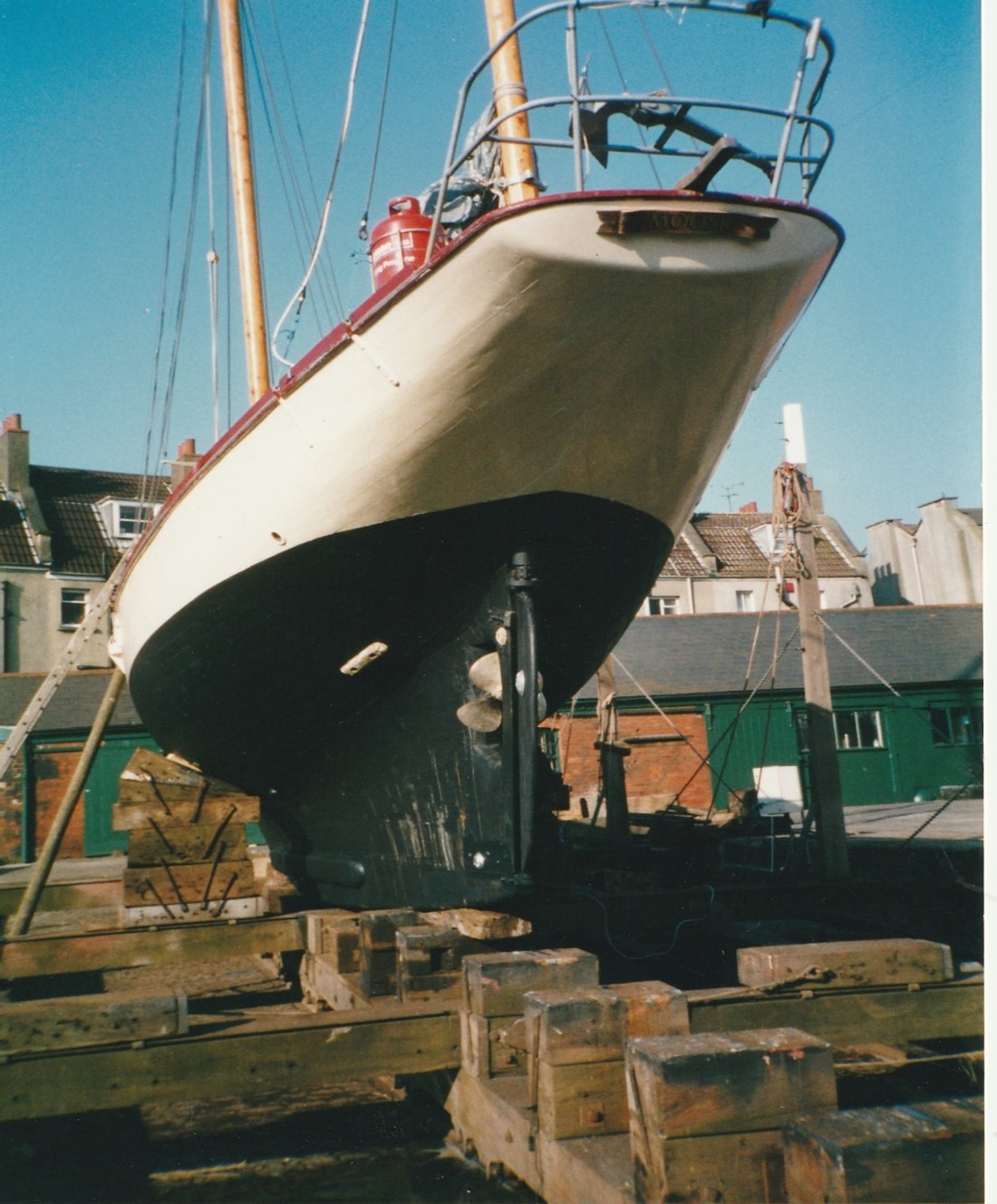
The Moosk on the Slip 2003. The Moosk, 1906 Gaff yawl and ‘A classic gentleman’s cruiser – beautiful and fast’. She was built in 1906 in Falmouth and is 27 metres long and one of the first boats built with a motor and ‘sparks’ for lighting the cabin. She was found abandoned and wrecked in Glasgow in 1998. She was rebuilt in Southwold by G Brown & Sons and relaunched in 2001. Refurbished in 2015/16 and now owned by the Island Trust who are a charity working with disadvantaged young people.
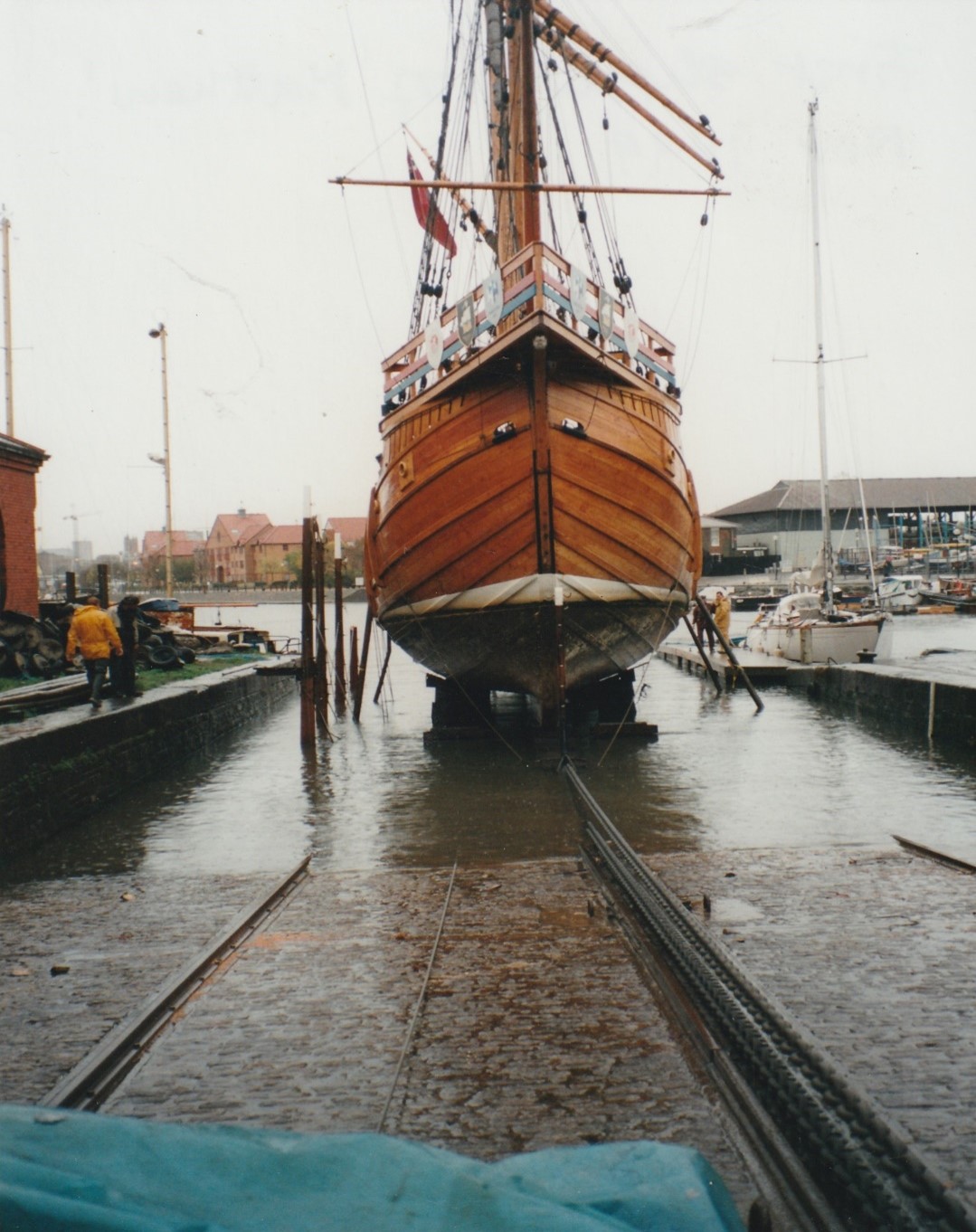
The Matthew on the Slip for the first time in 1999. A familiar sight in Bristol Docks, and always a star attraction when she’s on the slip, the Matthew is a modern reconstruction of John Cabot’s caravel in which he sailed to Newfoundland in 1497. Built between 1994 and 1996, she sailed across the Atlantic in 1997 to mark the 500th anniversary of Cabot’s voyage. She is now available for visits and trips offering great views of the harbour and the Avon Gorge.
